I reside at the Aberdeen Lofts condominium in Cambridge, Massachusetts. It is a splendid old brick-and-beam industrial building. Who built it? And why is it named “Aberdeen”?

Alexander McDonald Company
Alexander McDonald was born April 28, 1829 in Aberdeen, Scotland. He emigrated to the United States in 1852, arriving in New York City and then making his way to Cambridge. By 1856 he had purchased a plot of land (the present-day site of Aberdeen Lofts) and founded the Alexander McDonald Company (specializing in the construction of stone monuments). Sometime before 1886, a dead-end road called “McDonald Street” had been constructed through McDonald’s property.
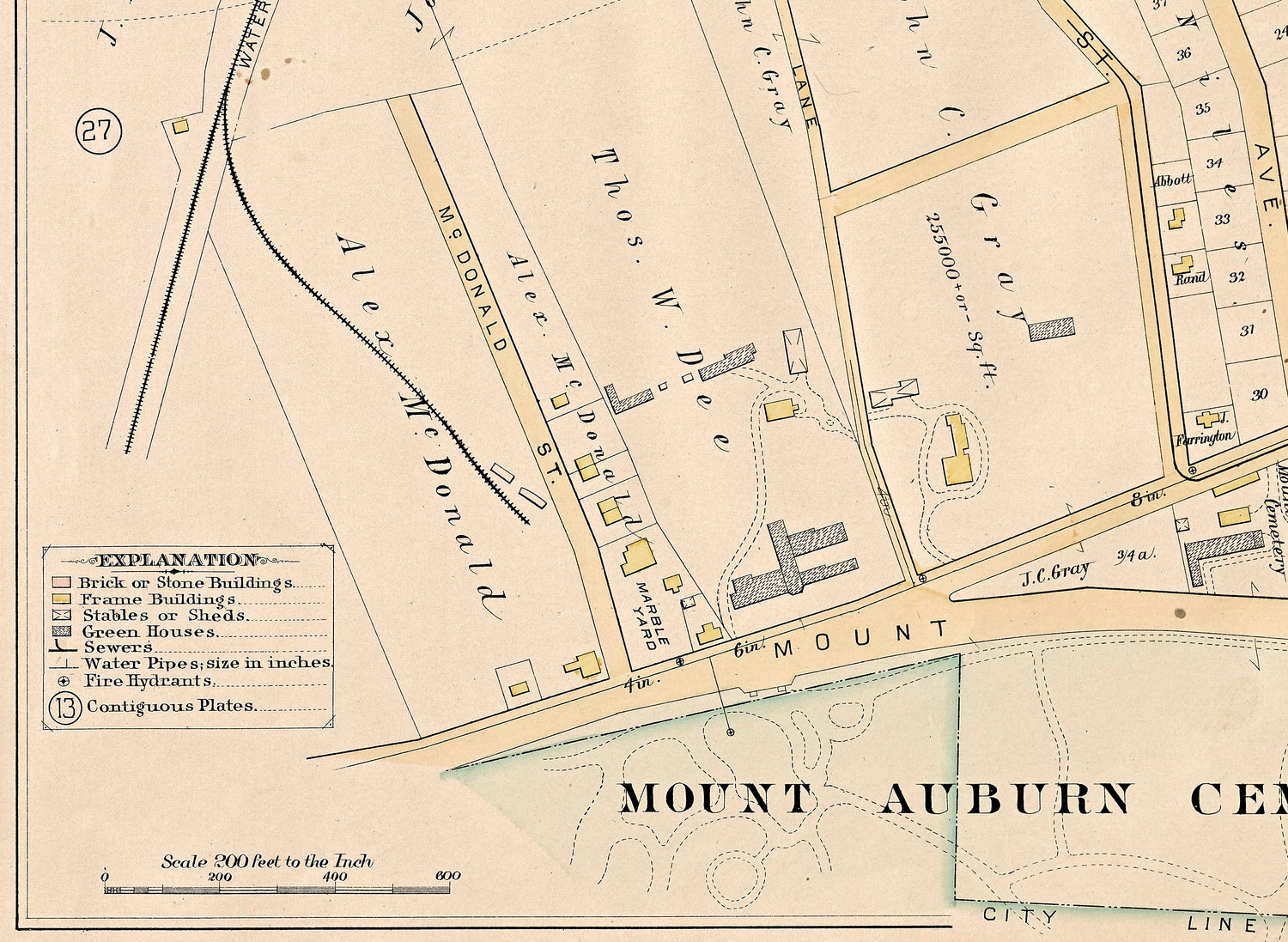
1886 Cambridge atlas showing McDonald Street.

Monument by Alexander McDonald at Mount Auburn Cemetery.
In February of 1895, the Cambridge city council proposed to extend and widen McDonald Street in order to create a new road connection between Mount Auburn Street and Huron Avenue. The new connection was needed to allow Huron Avenue streetcars to reach Mount Auburn Street, and also to provide a right-of-way for a new sewer line. The proposal was sent to the Cambridge committee on roads and bridges, which held its first hearing on the matter on Thursday, March 7, 1895.
John Gray, the owner of the parcel a block to the east of McDonald Street, brought forth a competing proposal to widen and extend Fresh Pond Lane instead of McDonald Street. The debate over these two proposals continued for months, with the two landowners proposing increasingly grand designs for their respective streets. The matter was finally settled by the Cambridge city council, which on July 2, 1895 voted to proceed with the extension and widening of McDonald Street.
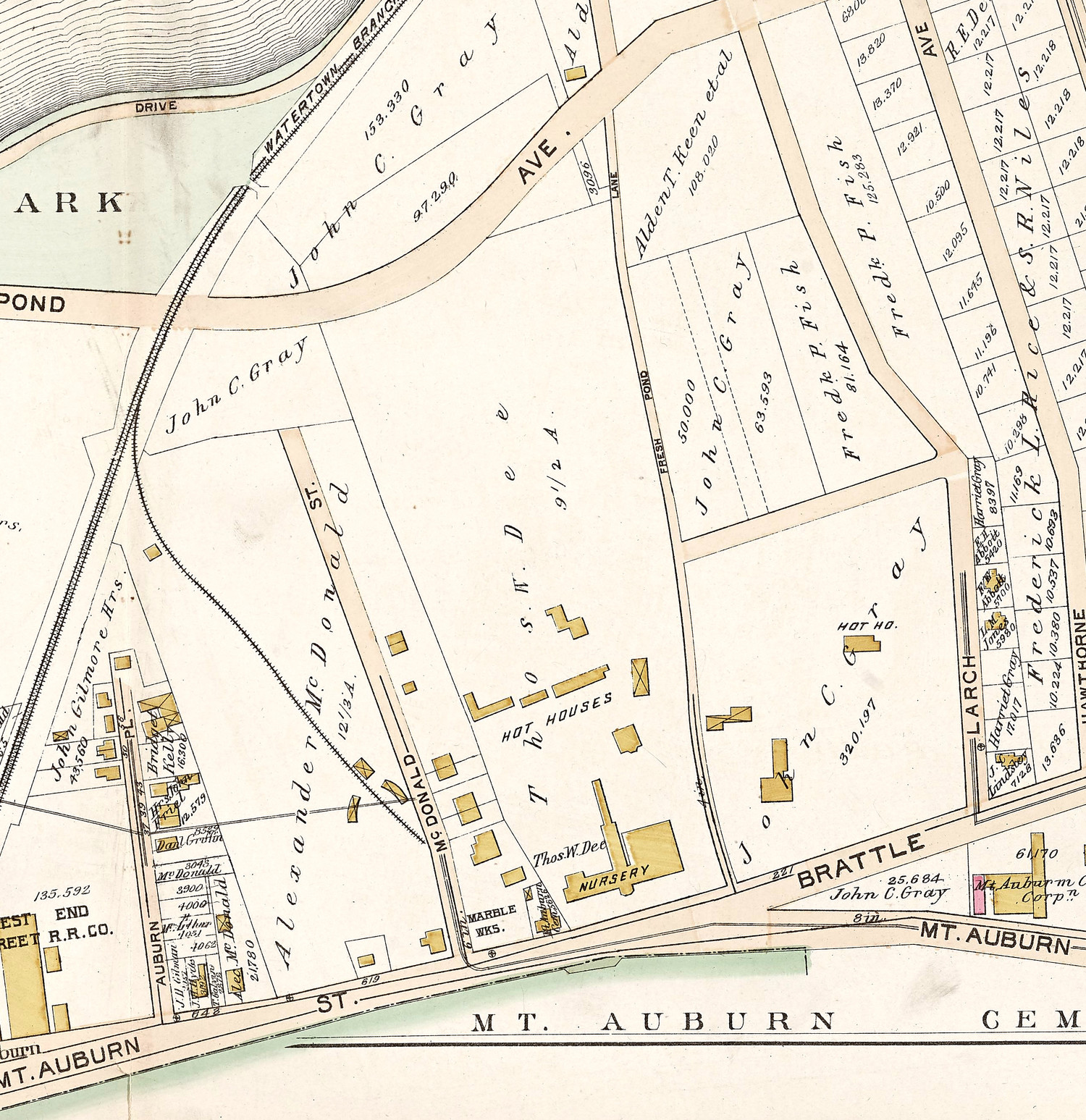
1894 Cambridge atlas showing McDonald Street and Fresh Pond Lane.
On November 2, 1895, the Cambridge Tribune published a recommendation for a new name for McDonald Street:
It has been suggested, first we believe in The Tribune, that McDonald street, as widened to one hundred feet and parked, should receive a new name. The suggestion has met with favor but, as yet, no thoroughly satisfactory name has been presented for that purpose. As Mr. McDonald, who is a large owner of property in that neighborhood and whose name it is propsed to take away from the thoroughfare is a Scotchman, how would it do to call the new street Aberdeen avenue, or Edinboro avenue? Both these names come trippingly of the tongue and both are in a way suggestive, while their selection would perhaps be some compensation to Mr. McDonald for the change.
McDonald Street was thus widened to 100 feet, with a generous median, and extended to Huron Avenue. The Cambridge Chronicle of December 7, 1895 announced that “The name of McDonald street has been changed to Aberdeen avenue.” By spring of 1896, construction was largely complete and the new Aberdeen Avenue was ready for tree planting.
After half a century in business, Alexander McDonald died of pneumonia on January 11, 1906. The McDonald company continued to operate for many more years, with the name eventually changing to “Mount Auburn Memorials” as the company changed hands. The “est. 1856” sign remains above the door to this day.
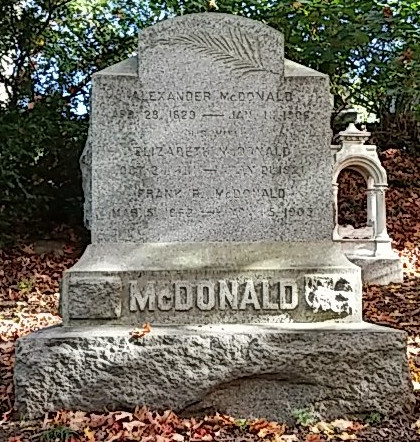
Burial site of Alexander McDonald at Mount Auburn Cemetery.
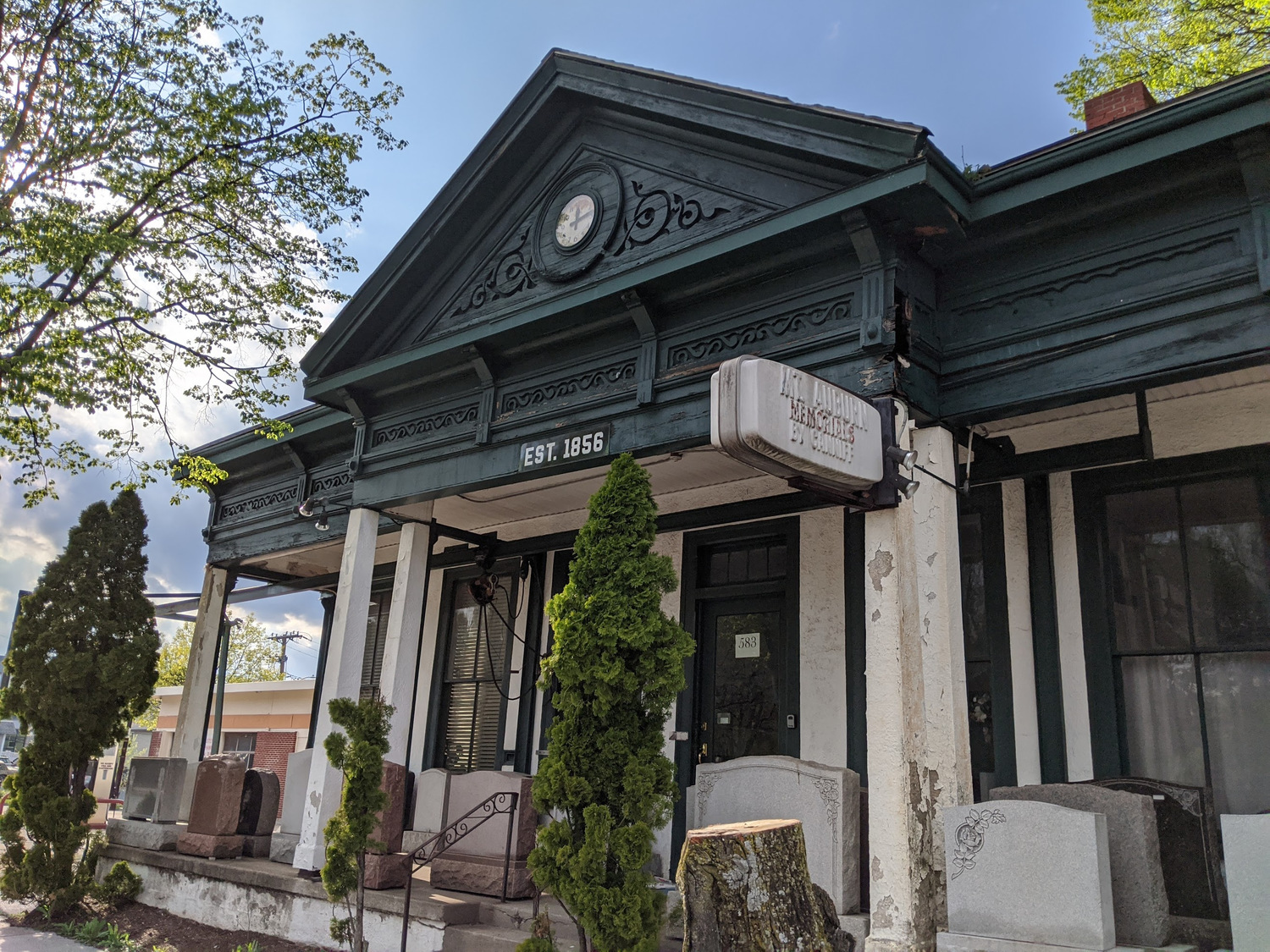
Alexander McDonald Company building in 2020.
George W. Gale Lumber Company
Most of the McDonald property was purchased by the George W. Gale Lumber Company in 1912.

Subdivision of the McDonald property in preparation for sale.
On April 11, 1914, the Cambridge Chronicle published an update about the lumber company’s progress:
The new yard of the George W. Gale Lumber Co., which is located on Aberdeen avenue, in the Mt. Auburn district is slowly taking shape for all kinds of practical work. Treasurer Dean daily visits the ground in order to keep a line on the progress of the development of the manufacturing end of the business. The entire yard is enclosed by 2,400 lineal feet of six-foot fencing. The yard is 1,000x200 feet, giving a total area of 200,000 square feet. A very fine shed of some 90x390 feet has been built for the storage of dressed lumber. A dressing mill, about 75x90 feet will be built, also a kiln. Cement piers are now being put down, upon which the mill will be built. The office building which is detached from any other building, and which is rapidly approaching completion, will be thoroughly up to date. The machinery in the present mill will probably be moved to the new mill. Just at present Mr. Dean is unable to say when the Aberdeen avenue yard will find all of the Gale activities their new location.
The “very fine shed for the storage of dressed lumber” was located on the footprint of present-day Aberdeen Lofts, but extends southward by an additional 200 feet. The “office building” was located just east of the southeastern corner of the lumber shed. The address used for both buildings was 64 Aberdeen Avenue.

Sketch of the new Gale office from September 1913.
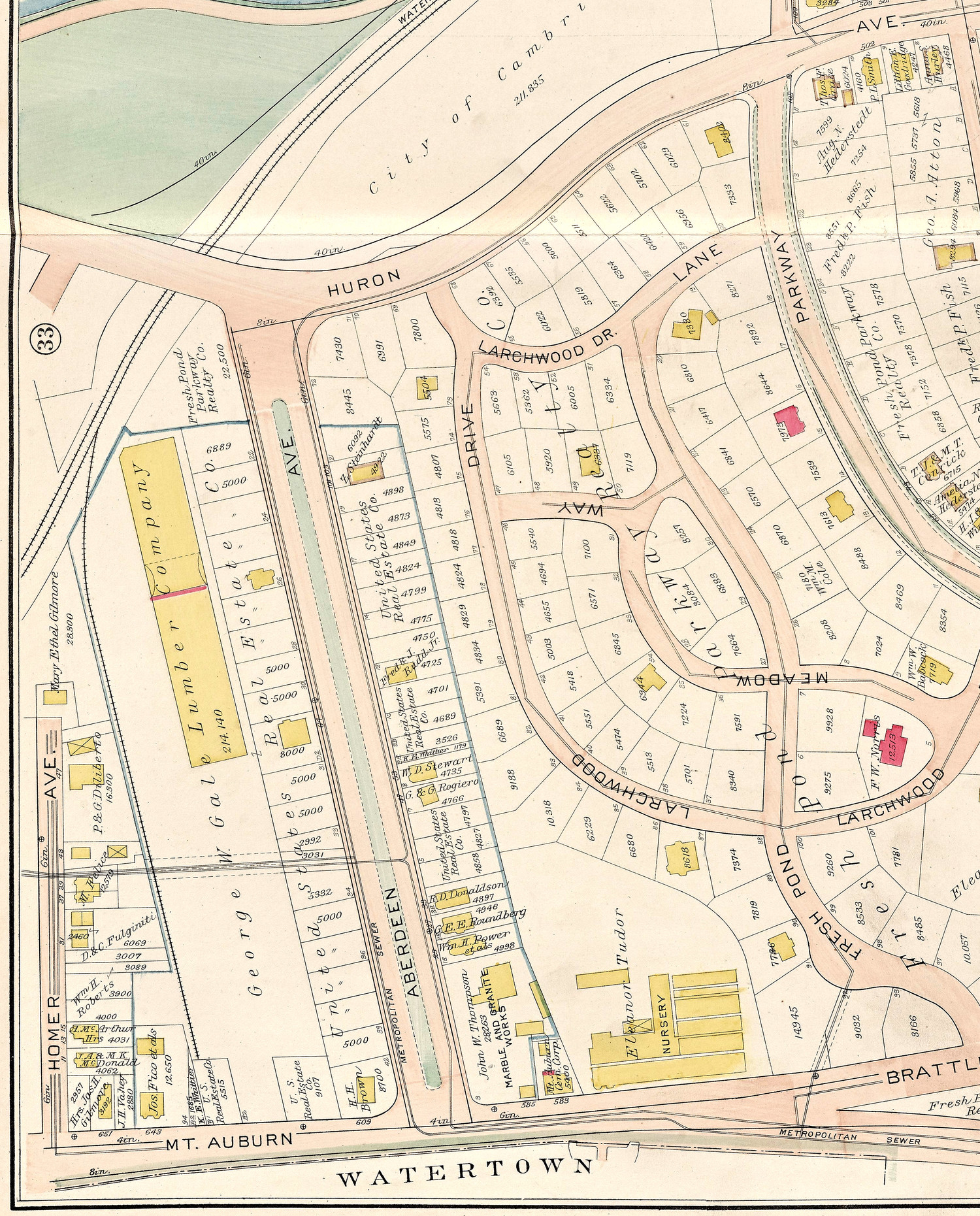
1916 Cambridge atlas showing Aberdeen Avenue and the new lumber shed.
By November 1916, the George W. Gale Lumber Company had run into financial trouple and was liquidating its assets in order to pay creditors. The Aberdeen yard, including its office building and lumber shed, was sold to the Atwood & McManus Box Company in April of 1917.
The George W. Gale Lumber Company ceased to exist in 1917. However, Gale’s vice president Frederick Sterritt purchased the Gale lumber yards on Albany street and went into business for himself, taking a number of Gale employees with him. F. D. Sterritt lumber is in business to this day and is a well-known name in Cambridge. The company currently operates out of a yard in Watertown, about a mile southwest of Aberdeen Avenue.
Atwood & McManus Box Company
The Atwood & McManus Box Company took over the Aberdeen Avenue buildings of the George W. Gale Lumber Company and soon commenced manufacturing.

On November 19, 1918, a fire broke out and caused $150,000 of damage. The northern half of the lumber shed was substantially damaged, but the southern spread of the fire was halted by a brick firewall located halfway along the length of the shed. The event was detailed in the Cambridge Chronicle of November 23, 1918:
The factory consists of one large building, which is some 600 feet long and 200 feet wide. It is two stories of wood, but in the center has a brick partition wall, which it is though aided somewhat in preventing the fire from spreading into and gutting the southerly half. In the northerly half of the building is where the major portion of the work of manufacturing boxes took place and the second floor was filled with costly machinery. It is thought that the fire started somewhere near the vicinity of the boiler room and then ate its way up into the first floor, where there was an abundance of fine lumber, much of it already cut and ready to be sent to the second story where the boards are put together and made into boxes.
In 1919, the company began construction on a new manufacturing building to replace the destroyed northern half of the lumber shed. This is the building which would become the Aberdeen Lofts condominium 85 years later. The new building was described in the Cambridge Tribune of September 27, 1919:
Contract has been awarded to Joseph Slotnik, of Chelsea, for a manufacturing building to be erected at 64 Aberdeen avenue, for the Atwood-McManus Box Company, of Chelsea. The building will be of brick construction, two stories high and 242 by 90 feet in size. The estimated cost is $75,000.
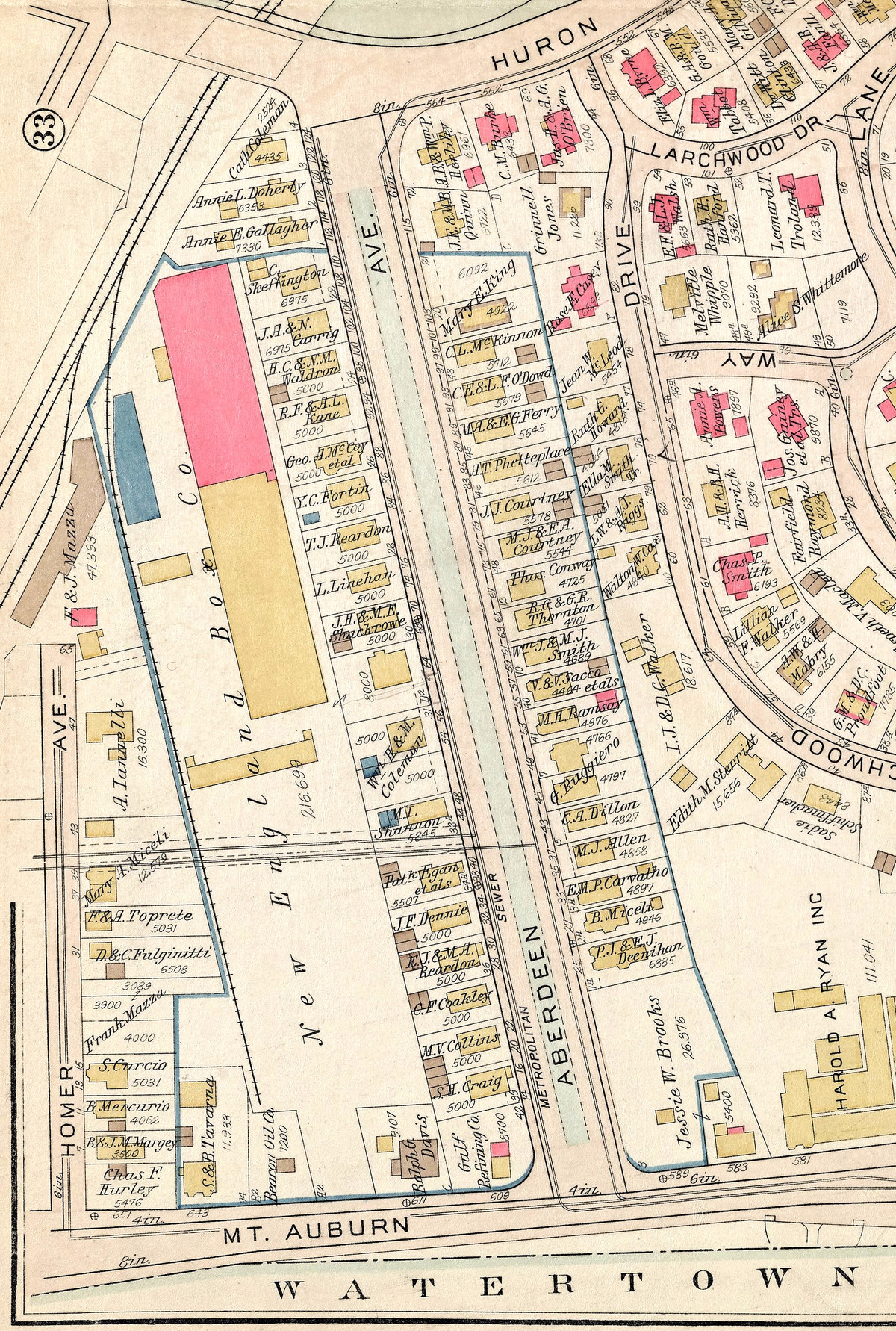
1930 Cambridge atlas showing the new Atwood & McManus factory building (in pink).
The Cambridge Chronicle of January 31, 1920 lists the new Atwood & McManus building as completed with a final cost of $100,000. However, the brand new factory remained idle for another two years. From the Cambridge Tribune of May 13, 1922:
The Atwood & McManus Co., box makers, of Chelsea, may reopen their Cambridge plant on Aberdeen avenue in the near future. The firm handle boxes, shooks, shavings, sawdust, and kindling wood. Their immense Cambridge plant has been closed since 1919 due to the general business depresion, but the company is hopeful that things may take a turn for the better, justifying opening the Cambridge plant, which employs about 100 people when running to capacity.
The box factory reopened and operated uneventfully (with the exception of a murder in the factory in 1926) until it closed due to financial difficulties during the Great Depression. By 1931 the Cambridge factory was vacant, and in 1935 the property was sold to the Gordon Supply Company.
To the modern day
The original George W. Gale office building passed to the city of Cambridge and became the Collins Branch of the Cambridge Public Library, which it remains to this day. The library kept its original address of 64 Aberdeen Avenue.
The address of the factory building was changed to 60 Aberdeen Avenue (sometimes written “60R Aberdeen Avenue”), and the building experienced a variety of other uses. The building and property were purchased by Aberdeen Place L.L.C. for $4.7 million in May 2004. The Cambridge Planning Board approved the conversion of the factory building to housing units on October 5, 2004.
The condominium developers declared that the parking lot would be known as Aberdeen Way and gave the factory building a new address of 1 Aberdeen Way.
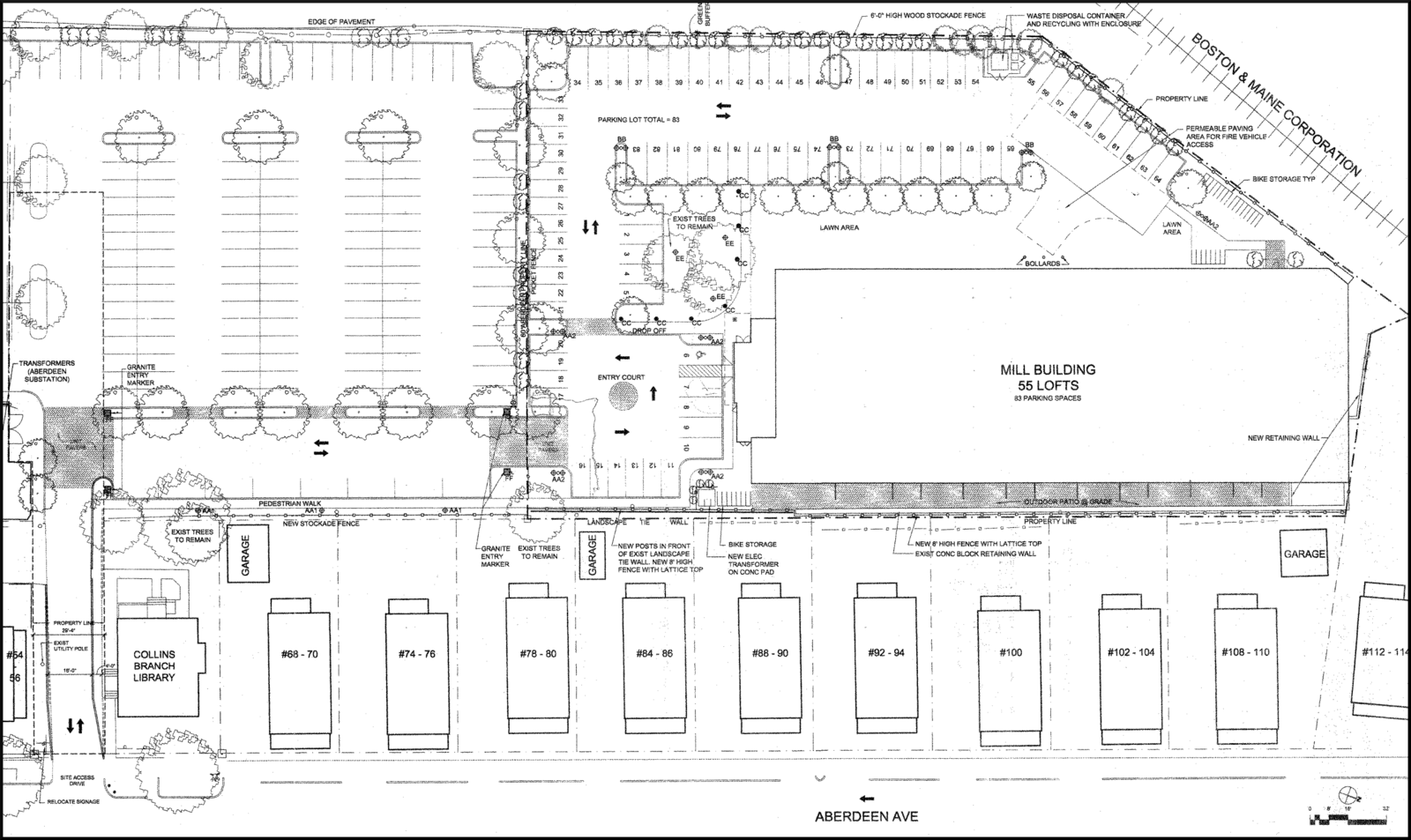
Architectural site plan for the Aberdeen Lofts condominium.
And that’s the story of how I came to live in a box factory named after a Scottish stonemason.